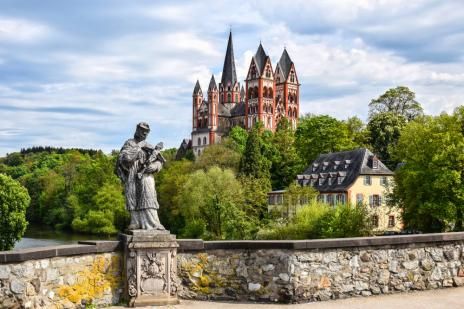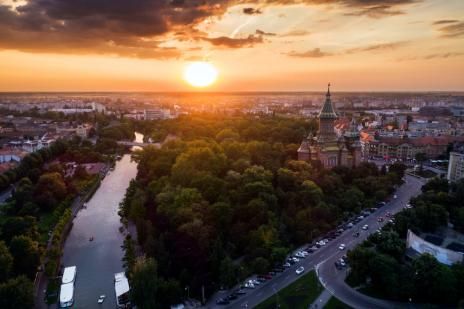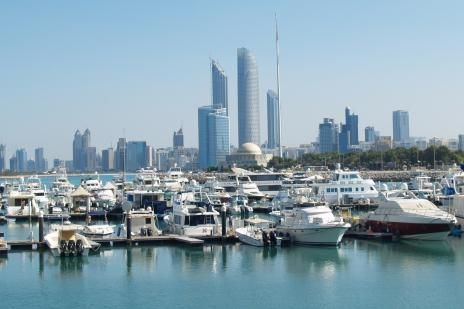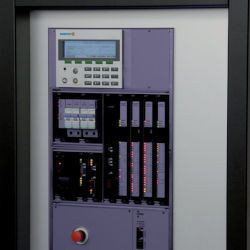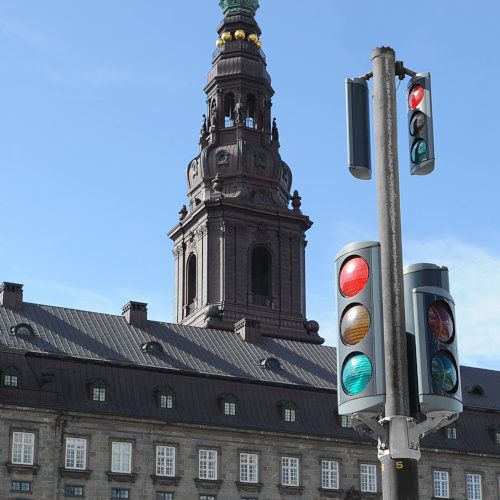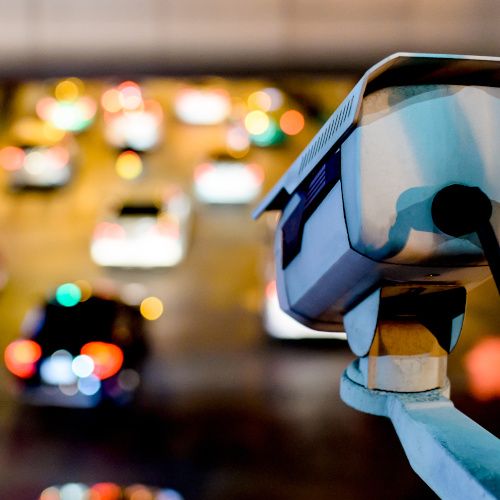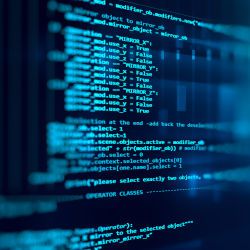The observation of traffic forms the basis for modern traffic management as well as for traffic control. In order to derive targeted measures, it needs the right information about the traffic network - in real time. This traffic data usually comes from sensors and detectors, traffic cameras, signalling devices (e.g. traffic lights) and other sources. The latest technologies and systems that provide information for traffic control are based on Bluetooth® or Floating Car Data (FCD) - and enrich traffic management with further control options.

"A modern transport infrastructure includes intelligent transport systems that record and process all relevant traffic information in real time. This data is necessary for proactive traffic control and also serves to network the various modes of transport. Highly congested infrastructures in particular are dependent on data-based traffic control. Intelligent control allows traffic flow to be maintained, congestion to be reduced (or avoided), traffic routes to be rerouted and traffic warnings to be issued in good time."
Michael Schuch, Chief Operating Officer (COO)
Why traffic control?
The goals of traffic control are congruent with the demands that cities and municipalities worldwide place on modern traffic management. In summary, intelligent traffic control should promote or support the following goals:
- Maintaining the flow of traffic
- Reduction (or avoidance) of congestion
- Increasing traffic safety
- Increasing efficiency in logistics
- Reduction of fuel consumption
To achieve these and other goals, modern traffic control performs several functions.
Major Features of Traffic Monitoring
Real-time traffic observation
Traffic operation monitoring
Traffic data collection
Traffic diagnostics
Video management
Logging
Traffic control: Solutions from SWARCO
SWARCO offers a wide range of solutions, software and hardware for traffic control.
Real Time Traffic Observation
The traffic information provided by signal heads, sensors, video cameras, controllers and detector stations is aggregated and normalised to provide a real-time overview of the current traffic situation - and to be able to react to it if necessary. Good to know: The status of all data-providing signal groups (sensors, cameras, detectors, etc.) is retrieved in real time and made available as a time-based diagram and historical archive.
Traffic Operation Monitoring
The solution connects a large number of field devices and external systems. The user is able to monitor all device and system messages regarding technical problems that need to be dealt with. Basic information includes:
- Timestamp
- Device identification
- Description of the device or subsystem
- Error codes
- Error description
- Status (error, undefined, ok, etc.)
Good to know: Based on monitoring features, the integrated alarm management is responsible for generating alarms or warnings to report device failures and manage acknowledgements. Multiple notification channels are used to inform system users of detected errors.
Traffic Diagnostics & Device Diagnostics
The diagnostic component is used to detect technical faults in the system, on-site equipment, communication systems and other technical equipment. The messages generated by the diagnostic tool are used to ensure minimal downtime of the system and equipment and quick recovery actions in case of monitored malfunctions.
Traffic Data Collection
This component retrieves traffic-related data from the field equipment and makes it available to the user for display, export and printing. The most important values are:
- Traffic volume (number)
- Speed
- Occupancy
- Classification (includes vehicle speed and length)
Good to know: A simple overview of traffic data, events and situations is essential for comprehensive quality management. This information is analysed, visualised and saved as a report in comprehensive statistics of individual data and, if necessary, as aggregated data and combined evaluations. Different time periods are available (e.g. today, yesterday, predefined interval). Reports are also generated on all recorded faults of individual components.
Video Management
Video streams from cameras are available to users for real time visualisation. Basic functionalities like panning, zooming and tilting are available directly via the user interface. The video management functionality integrates a dedicated sub-systems for the storage and archiving of video feeds.
Logging
This solution implements safety-critical functions and must therefore provide a reliable logging function. With this component, all operations and system events are logged with timestamps that can later be used in any kind of diagnosis or evaluation.
Good to know: The log files are accessible for diagnosis and can be exported. All system events and changes in system settings are logged withtime stamps for later evaluation. The logging functions also include the possibility to generate relevant reports from this data.
References
Traffic Management Solutions
Do you want to know more about SWARCO solutions?
Contact our traffic management experts
Traffic control with SWARCO
Cities and communities are growing worldwide. Keeping traffic flowing as it grows is therefore becoming an ever greater challenge. Especially in urban traffic, intelligent traffic control contributes more than ever to greater efficiency and more sustainability. Modern information and communication technologies play a key role in this. The increasing variety of means of transport as well as changing modern lifestyles place new demands on traffic control.
At SWARCO, we support cities and municipalities around the world in integrating new technologies, products and services and realising fundamental changes in mobility.
Last but not least, new technologies in the field of ITS enable operators all over the world to change the way they manage their transport systems. In this way, cities and municipalities are increasingly improving traffic flow, increasing traffic safety and - through the targeted reduction of emissions - making a significant contribution to greater environmental protection.
FAQs
Frequently asked questions shortly explained
Traffic control is now an integral part of any modern transport infrastructure. The lynchpin of traffic control is the collection of traffic information & traffic data in real time. Based on this, operators in traffic control centres can intervene in the traffic situation - and thus control the flow of traffic, reduce congestion, minimise the risk of accidents, issue warnings and much more.
A traffic control centre mainly consists of monitors and screens on which the traffic events of a city are displayed - if possible in real time. Behind the screens are usually officers who monitor the selected traffic junctions and react accordingly to events. In the meantime, AI systems are also being used for this purpose.
The essential goal of traffic control is to maintain and promote the flow of traffic. Because the better the traffic flows, the...
- fewer traffic jams and delays occur.
- there is more safety for all road users.
- less noise & fewer pollutants are emitted.
- all road users reach their destination more quickly.
- public transport becomes more attractive.
- the urban climate becomes less stressful and more pleasant.
Intelligent traffic lights are used, for example, during rush hour in city centres. Depending on the traffic volume, the AI - based on data - extends or shortens the green phases at certain junctions. In this way, intelligent traffic lights proactively influence the traffic situation.
Intelligent traffic control improves the flow of traffic, for example by...
- continuously optimising traffic light control - in relation to the current situation.
- reducing stop-and-go traffic to the absolute minimum.
- automating signalling systems (traffic lights) - wherever it is possible and makes sense.
- prioritised public transport (e.g. green traffic lights & dedicated lanes for buses).
- data-based forecasts & analyses of the traffic situation.
Advancing digitalisation and new technologies - e.g. autonomous driving, Car2Car communication, 5G, etc. - are paving the way for traffic management to control all road users more efficiently, safely and sustainably. Much-discussed and already tested future technologies are, for example:
- Platooning (networking of successive vehicles, HGVs).
- Automated accident prevention
- Lane departure warning systems
- Green wave for police & rescue vehicles
- Intelligent warning systems for aquaplaning

STAY INFORMED
ITS NEWSLETTER
Subscribte to our ITS / Smart Mobility Newsletter
and receive updates about trends, developments, solutions and events.

